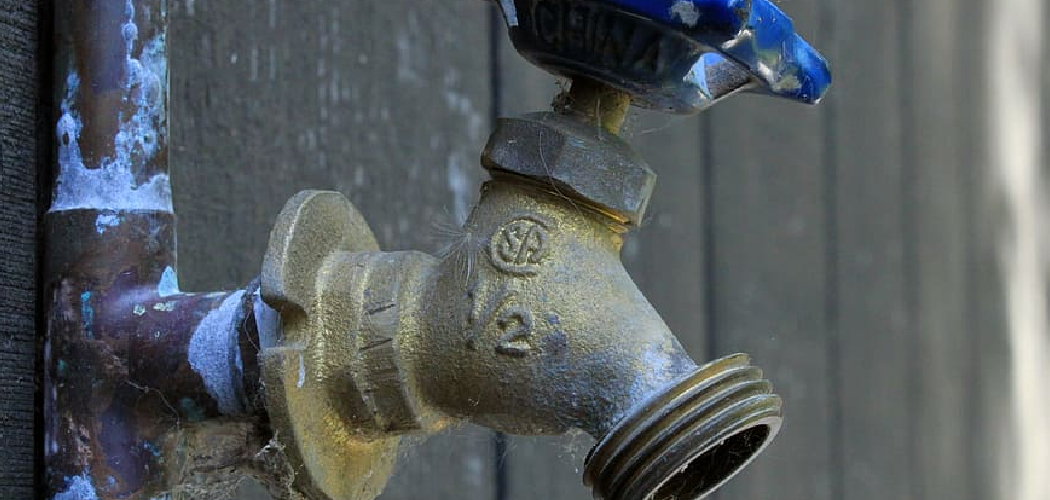When faced with a locked outdoor faucet handle and no key in sight, it can be frustrating, especially when access to water is essential. Fortunately, there are a few practical and safe methods you can use to unlock the faucet without a key.
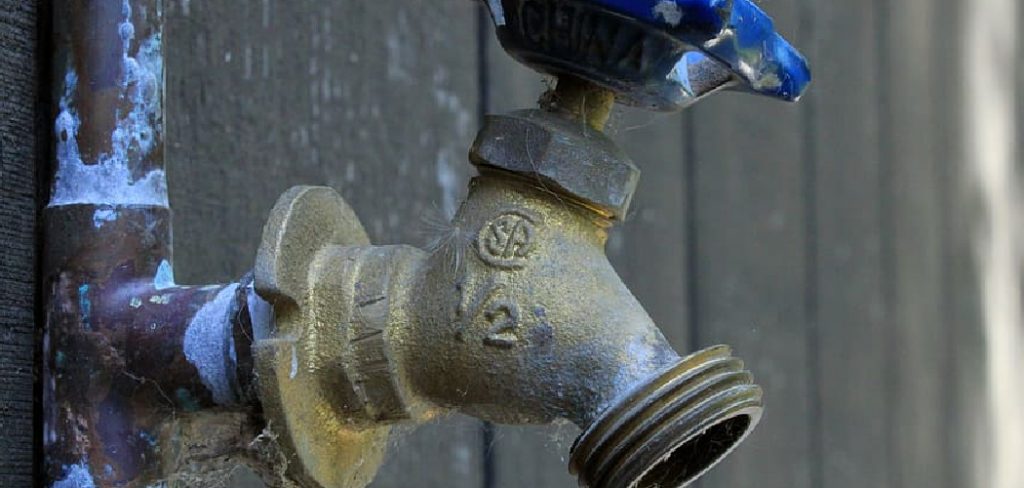
This guide on How to unlock outdoor faucet handle without key will walk you through some effective solutions, ensuring you can resolve the issue quickly and without causing damage.
Why is the Outdoor Faucet Handle Locked?
The first step to unlocking an outdoor faucet handle without a key is understanding why it is locked in the first place. There are a few reasons why this may happen, including:
- The Faucet has Intentionally Locked a Long Time Ago, and the Key Has Been Lost or Forgotten.
- The Faucet Was Accidentally Locked by Someone Who Did Not Know How to Unlock It.
- The Lock Mechanism is Faulty or Jammed.
- There is a Buildup of Rust or Mineral Deposits Inside the Lock, Preventing the Key from Turning.
- The Key Has Broken off in the Lock Mechanism.
Each situation may require a different approach to unlocking the faucet handle. It’s essential to assess the lock and determine the cause before attempting any solution.
Needed Materials
Before attempting to unlock the outdoor faucet handle, gather the necessary materials to complete the task. These may include:
A Pair of Pliers or a Wrench:
These tools can be used to turn or loosen the lock mechanism if it is jammed.
A Screwdriver:
A flathead screwdriver can be used to wedge and turn the lock, simulating the key’s function.
Lubricant:
If rust or mineral deposits are preventing the key from turning, a lubricant such as WD-40 or cooking oil can help loosen it and make it easier to unlock.
6 Methods on How to Unlock Outdoor Faucet Handle Without Key
Method 1: Use a Key Extractor
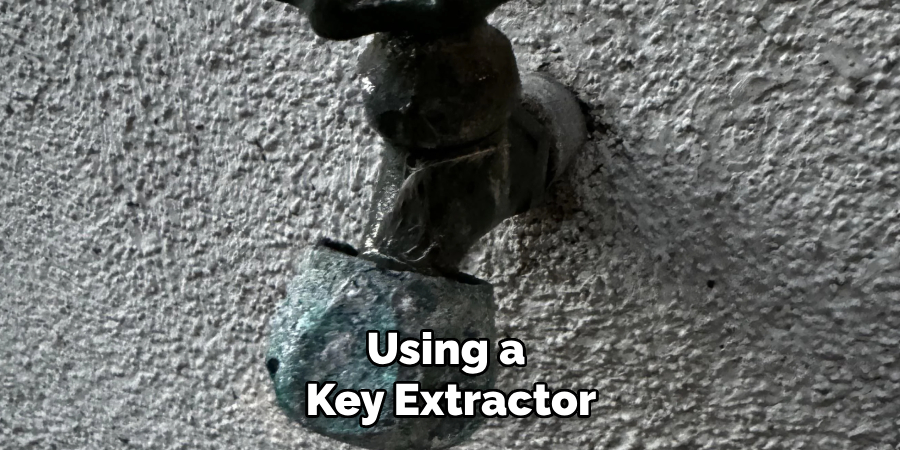
If the key has broken off inside the lock mechanism, using a key extractor is one of the most effective ways to resolve the issue. A key extractor is a specialized tool designed to grip and remove broken key fragments. Here’s how to use it:
Assess the Situation
Begin by examining the lock to identify the position of the broken key inside. Make sure the broken piece is visible enough to work with.
Insert the Key Extractor
Carefully slide the key extractor tool alongside the broken key fragment. Ensure it hooks onto the notches or edges of the broken piece.
Gently Pull the Key Fragment Out
Once the extractor has a hold on the broken key, pull it out slowly and evenly, being cautious not to push the fragment further inward, which could complicate the situation.
Lubricate the Lock if Necessary
If the piece is jammed due to rust or mineral buildup, apply a lubricant such as WD-40 to the lock and give it a few minutes to loosen any debris before attempting extraction again.
Test the Faucet Handle
After removing the broken key fragment, try turning the handle to ensure the lock mechanism is no longer obstructed.
Using a key extractor minimizes damage to the lock and ensures that the problem is resolved efficiently. If you don’t have this tool on hand, you may be able to find it at hardware stores or borrow one from a neighbor or professional locksmith.
Method 2: Try a Tubular Lock Pick
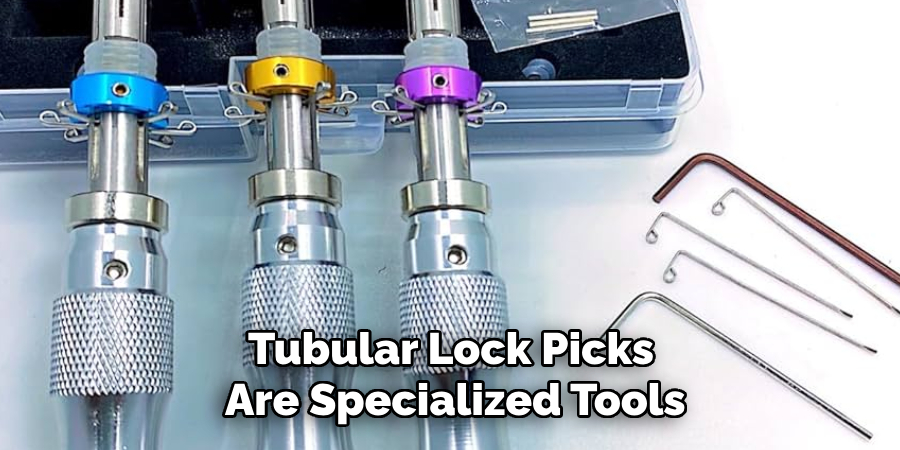
Tubular lock picks are specialized tools designed to open tubular or round key locks, such as those found on outdoor faucet handles. They work similarly to a key extractor in that they grip and turn the lock mechanism from within. Here’s how to use it:
Insert the Tubular Lock Pick into the Keyhole
Begin by inserting the tool into the lock and turning it clockwise until you feel resistance. The tool should fit securely into the lock’s pins.
Turn the Lock Pick
While applying light pressure on the tension wrench, use the tubular lock-picking tool to turn the lock counterclockwise. This action imitates turning a key and should unlock the handle if it was accidentally locked or jammed.
Test the Faucet Handle
Once you’ve successfully turned the lock pick, try turning the faucet handle to ensure it has been unlocked. If not, repeat the process until it turns smoothly.
A tubular lock pick is a specialized tool that may require some practice and patience to use effectively. It may be useful to watch tutorials or seek professional help if you’re having trouble.
Method 3: Use Pliers or a Wrench
If the lock mechanism is jammed, using pliers or a wrench may be an effective solution. Here’s how to use them:
Grip the Lock with Pliers
Using pliers or a wrench, grip and turn the lock mechanism counterclockwise while applying slight pressure in the direction of turning. This action imitates turning a key.
Use a Hammer for Extra Force
If necessary, lightly tap on the end of the pliers or wrench with a hammer to apply extra force and loosen any debris inside.
Test the Faucet Handle
Once you’ve turned the lock mechanism, try turning the faucet handle to ensure it has been unlocked.
This method may be more challenging on newer locks, which are designed with anti-picking mechanisms. It’s essential to use caution and avoid damaging the lock or faucet handle in the process.
Method 4: Try a Flathead Screwdriver
Another method for unlocking an outdoor faucet handle without a key is by using a flathead screwdriver. Here’s how:
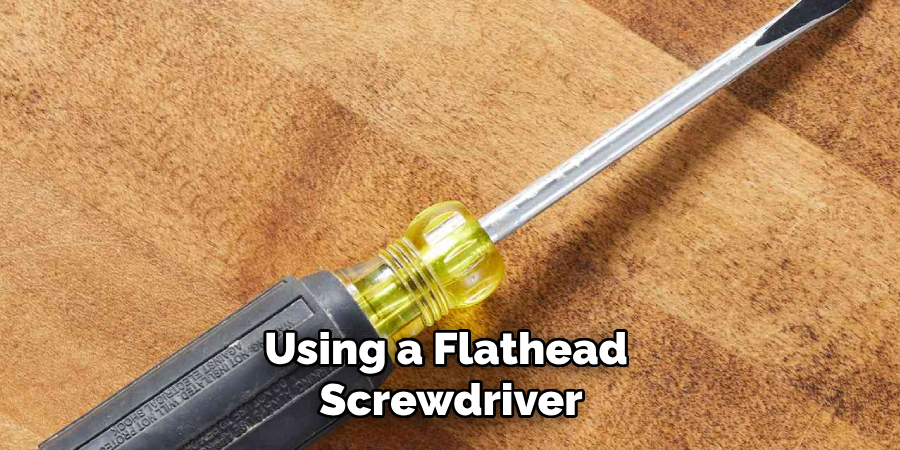
Insert the Screwdriver into the Keyhole
Carefully insert the flathead screwdriver into the keyhole until you feel resistance.
Turn the Screwdriver
While applying slight pressure on the tension wrench, turn the screwdriver counterclockwise as if turning a key. This action may unlock the mechanism if it is jammed or accidentally locked.
Test the Faucet Handle
After successfully turning the lock, try turning the faucet handle to ensure it has been unlocked.
This method may be more challenging than using a key extractor or lock pick and should only be attempted if you have experience with similar tasks.
Method 5: Apply Heat
If rust or mineral deposits are preventing the key from turning, applying heat can help loosen them. Here’s how:
Heat Up the Keyhole with a Hairdryer
Using a hairdryer, blow hot air directly into the keyhole for a few minutes to warm up and expand any rust or mineral deposits.
Try Turning the Lock
After applying heat, try turning the lock with a key or any of the other methods discussed above. The heat should have loosened up any obstructions and made it easier to unlock.
Test the Faucet Handle
Once you’ve successfully turned the lock, test the faucet handle to ensure it has been unlocked.
Be cautious not to overheat metal locks as they can become damaged or deform under extreme temperatures.
Method 6: Use Cooking Oil
If rust or mineral buildup is causing issues with unlocking your outdoor faucet handle, using cooking oil may be an effective solution. Here’s how:
Apply Cooking Oil onto the Keyhole
Using a dropper or small applicator, apply a few drops of cooking oil into the keyhole. Allow it to sit for a few minutes.
Try Turning the Lock
After letting the cooking oil sit, try turning the lock with a key or any of the other methods discussed above. The lubrication from the oil should help loosen any debris and make it easier to unlock.
Test the Faucet Handle
Once you’ve successfully turned the lock, test the faucet handle to ensure it has been unlocked.
This method may take some patience as multiple attempts may be needed for the cooking oil to fully penetrate and loosen any obstructions in the keyhole.
Following these methods on How to unlock outdoor faucet handle without key should help you successfully unlock your outdoor faucet handle without a key. However, if all else fails, it may be best to seek professional help from a locksmith to avoid causing further damage. Additionally, regularly cleaning and maintaining your outdoor faucet handle can prevent future issues with unlocking. So remember to keep the key and lock mechanism clean and free of debris for smooth operation in the future. Happy unlocking!
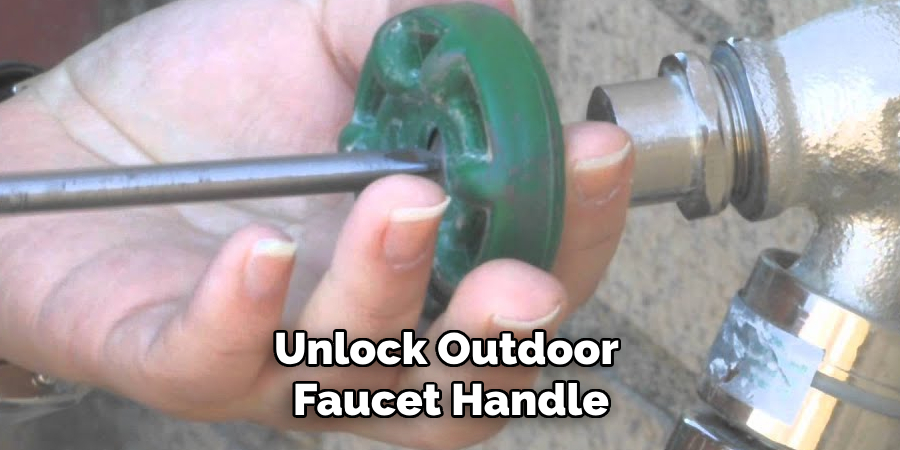
Frequently Asked Questions
Q: Can I Use Wd-40 or Other Lubricants on the Lock for Easier Unlocking?
A: Yes, lubricants can help loosen debris and make it easier to unlock. Just be cautious not to overuse them, as they can attract more dirt and buildup over time.
Q: What Should I Do if None of These Methods Work?
A: In this case, it’s best to seek professional help from a locksmith. Attempting to force the lock or using excessive methods can cause further damage and may end up being more expensive in the long run.
Q: Can I Prevent This from Happening in the Future?
A: Yes, regular maintenance and cleaning of your outdoor faucet handle can prevent issues with unlocking. Also, avoid jamming or forcing the lock to prevent damage. If you regularly face difficulties unlocking your outdoor faucet handle, it’s best to have a locksmith inspect and repair any underlying issues. Remember, prevention is always better than cure! So keep your outdoor faucet handle in top condition to avoid any future problems.
Conclusion
Unlocking an outdoor faucet handle without a key can be a challenging task, but with the right tools, techniques, and patience, it is often achievable. By using methods on How to unlock outdoor faucet handle without key such as lock picks, pliers, heat application, or lubricants like cooking oil, you can address common issues such as rust, debris, or jammed mechanisms. However, it is important to approach these methods carefully to avoid causing damage to the lock or faucet.
Regular maintenance, cleaning, and proper storage of keys can prevent similar problems in the future. If none of the methods described work, consulting a professional locksmith is the safest and most reliable option. By taking preventative measures and handling your faucet locks with care, you can ensure smoother operation and avoid unnecessary hassles.

